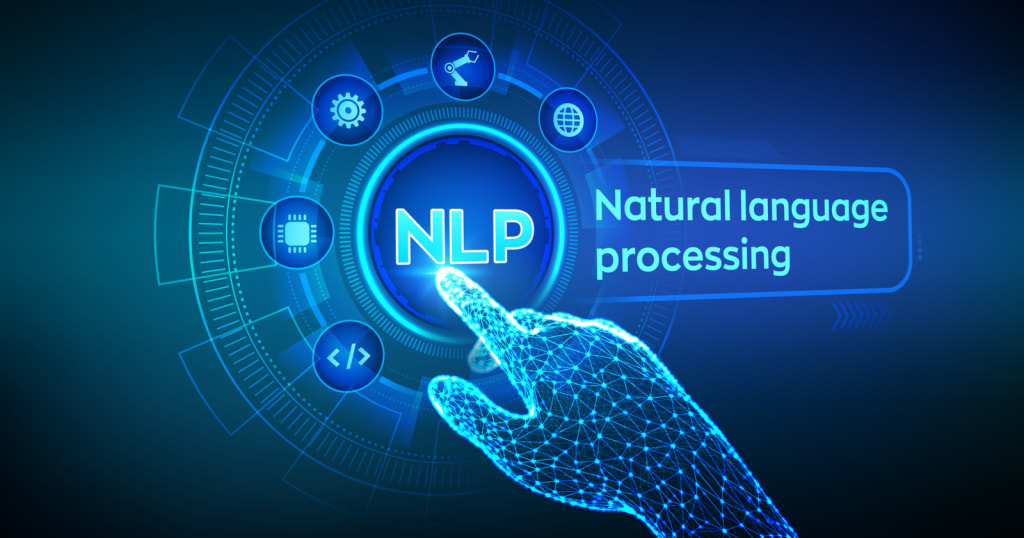Natural Language Processing (NLP)
Understanding the Basics and Potential Applications

Introduction:
Natural Language Processing (NLP) is a subfield of artificial intelligence (AI) and computer science that focuses on developing algorithms and computational models that can analyze, understand, and generate natural language. The goal of NLP is to enable machines to interact with humans in a way that is similar to how humans interact with each other, including understanding and processing natural language inputs and generating natural language outputs. This article provides an overview of the basics of NLP, its potential applications, and some of the challenges that must be overcome to realize its full potential.
Understanding the Basics of NLP
NLP involves several key components that work together to enable machines to process natural language. These components include:
Tokenization: This involves breaking a text into smaller units, such as words or sentences, which can then be processed and analyzed.
Part-of-Speech (POS) Tagging: This involves labeling each word in a text with its corresponding part of speech, such as noun, verb, adjective, or adverb.
Named Entity Recognition (NER): This involves identifying and classifying named entities in a text, such as people, places, and organizations.
Sentiment Analysis: This involves analyzing the emotional tone of a text to determine whether it is positive, negative, or neutral.
Topic Modeling: This involves identifying the main topics or themes in a text by analyzing the frequency and distribution of words and phrases.
Potential Applications of NLP
NLP has a wide range of potential applications in various fields, including:
Customer Service: NLP can be used to develop chatbots and virtual assistants that can understand and respond to customer queries in natural language.
Healthcare: NLP can be used to analyze medical records and identify patterns and trends that can help improve patient care and outcomes.
Education: NLP can be used to develop educational applications that can automatically grade essays and provide feedback to students.
Marketing: NLP can be used to analyze customer feedback and social media data to understand customer preferences and develop targeted marketing campaigns.
Legal: NLP can be used to analyze legal documents and assist lawyers in legal research and document review.
Challenges in NLP
Despite its potential, NLP faces several challenges that must be addressed to realize its full potential. Some of these challenges include:
Ambiguity: Natural language is often ambiguous, and different interpretations can be made depending on context. This makes it difficult for machines to accurately understand and interpret natural language inputs.
Complexity: Natural language is complex and can vary depending on factors such as dialect, slang, and cultural context. This makes it challenging to develop NLP models that can accurately analyze and generate natural language.
Data Availability: NLP models require large amounts of data to be trained effectively. However, obtaining and processing large datasets can be time-consuming and resource-intensive.
Bias: NLP models can be biased based on the data they are trained on. This can result in inaccurate or unfair predictions and recommendations.
Future Directions in NLP
Despite the challenges, the field of NLP is rapidly advancing, and there is much potential for future applications. Some of the future directions in NLP include:
Multilingual NLP: Developing NLP models that can understand and generate natural language in multiple languages.
Explainable NLP: Developing NLP models that can provide explanations for their predictions and recommendations, making them more transparent and trustworthy.
Interactive NLP: Developing NLP models that can interact with users in a more natural and intuitive way, such as through voice and gesture recognition.
TransfTransfer Learning: Developing NLP models that can learn from existing models and datasets, enabling faster and more efficient training.
Contextual Understanding: Develop NLP models that can better understand the context in which language is used, including sarcasm, irony, and humor.
Emotion Detection: Developing NLP models that can detect and analyze the emotional tone of language, enabling more accurate sentiment analysis and more personalized interactions.
Conclusion:
Natural Language Processing (NLP) is a rapidly advancing field with a wide range of potential applications in various fields, including customer service, healthcare, education, marketing, and legal. However, there are several challenges that must be addressed to realize its full potential, including ambiguity, complexity, data availability, and bias. Future directions in NLP include multilingual NLP, explainable NLP, interactive NLP, transfer learning, contextual understanding, and emotion detection. With continued research and development, NLP has the potential to revolutionize the way we interact with machines and each other, enabling more natural and intuitive communication.





Comments
There are no comments for this story
Be the first to respond and start the conversation.